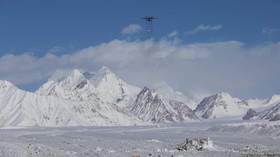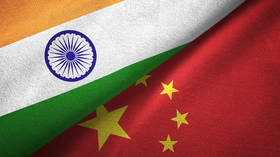India protests Chinese construction in disputed region

New Delhi has lodged a complaint with Beijing over its alleged construction of a road in the lower Shaksgam Valley, an area ceded to China by Pakistan in 1963 which India considers part of its territory.
Reacting to recent reports and satellite images, New Delhi on Thursday reproached the People’s Republic for its construction activity close to the Siachen Glacier – a territory sandwiched between Pakistan and China which is often called the world’s highest battlefield.
India has “registered a protest with the Chinese side against illegal attempts to alter facts on the ground,” according to the Foreign Ministry.
In April India Today reported a road being built in Shaksgam Valley off of Highway G219 in China’s Xinjiang Province that “disappears into mountains at a place approximately 50 km north of India’s northernmost point, Indira Col in Siachen Glacier.” The area has been visited by India’s Defense Minister Rajnath twice since March, the report noted.
#China building new road in occupied Kashmir near Siachen: Satellite imageshttps://t.co/zbICHk1pIt
— IndiaToday (@IndiaToday) April 25, 2024
“We have never accepted the so-called China-Pakistan Boundary Agreement of 1963 through which Pakistan unlawfully attempted to cede the area to China, and have consistently conveyed our rejection of the same,” Randhir Jaiswal, the spokesperson of the Indian Foreign Ministry asserted during a press briefing in New Delhi.
“We further reserve the right to take necessary measures to safeguard our interests,” he added.
In 1963 Chen Yi, the then-Chinese Foreign Minister, and Zulfikar Ali Bhutto, the Minister of External Affairs of Pakistan, signed an agreement demarcating a common boundary. Under the agreement, 5,180 square kilometers of the Shaksgam Valley was ceded to China. The larger Kashmir region has been the focus of a major border dispute between India and Pakistan since 1947, when the former British colony received independence, leading to the emergence of two separate countries.
The Indian Army is preparing to study the implications of Chinese-built roads in Shaksgam Valley, sensing a potential threat to Indian defenses on the Siachen Glacier, Hindustan Times reported on Friday. If China extends its road to the Upper Shaksgam Valley, then the Indian positions on Siachen Glacier will face twin threats: from Pakistan in the south and China to the north.
The development comes against the backdrop of a greater territorial dispute between India and China after their troops clashed in the disputed Galwan Valley in June 2020, resulting in casualties on both sides. Despite disengagement and de-escalation at the border afterward, several friction points remain. New Delhi and Beijing have held more than 20 rounds of border talks since the Galwan incident, with no indication of a breakthrough.
Tensions have resurfaced this year over Chinese claims to the Arunachal Pradesh region of India, which it calls ‘Zangnan’. Beijing protested after Indian Prime Minister Modi visited in March to inaugurate a tunnel built to hasten Indian troop deployments to the area. New Delhi has also slammed the People’s Republic for purporting to rename a dozen locations in the region, describing the move as “senseless.”
Where India Meets Russia – We are now on WhatsApp! Follow and share RT India in English and in Hindi













